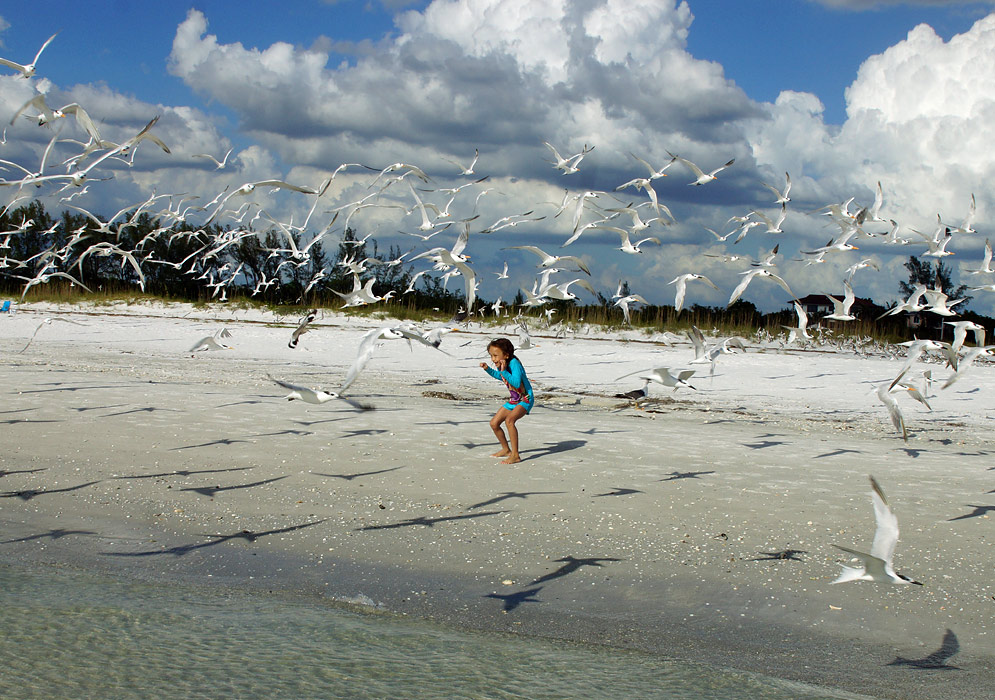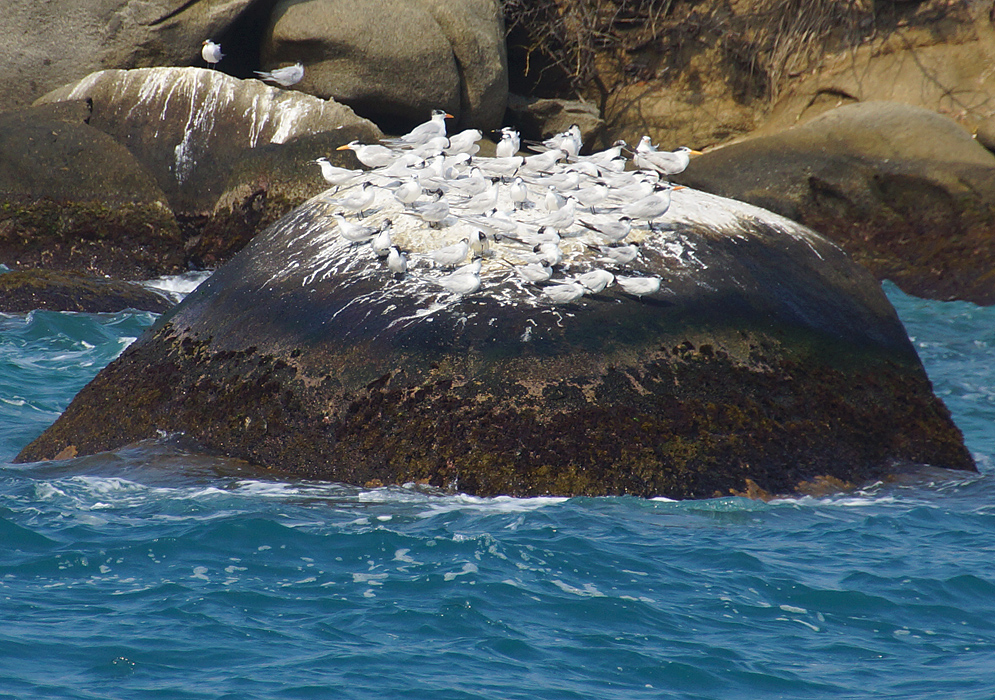This post has 11 Simple Fields-fields attached. Show fields.

The Royal Tern, is a distinctive seabird known for its sleek appearance and regal presence along warm saltwater coasts. With a global population estimated at around 250,000, the Royal Tern is considered stable in terms of conservation status. This bird species is primarily found along coastal beaches, saltwater bays, lagoons, and estuaries, where it nests and winters. Royal Terns are characterized by a tangerine-colored bill and a ragged, ink-black crest set against crisp white plumage. They gracefully fly along coastlines, diving for small fish with swift strikes of their dagger-like bills. These terns are highly social, often gathering in large, dense, and boisterous colonies for nesting. During the late summer and fall, they lose most of their black crest, revealing a white forehead. In terms of size, Royal Terns are among the largest terns found at North American beaches, surpassed only by the Caspian Tern. During the breeding season, Royal Terns engage in elaborate courtship rituals, where a male tern courts a female by offering her a fish, accompanied by bowing and strutting. They nest in large colonies, sometimes with up to 4,000 breeding pairs, and often alongside other terns and gulls. Uniquely, they build their nests on low-lying sandy islands, which are simple scrapes on the ground that may be lined with shell fragments, fish bones, or vegetation. Both parents incubate the eggs, and after hatching, the chicks join a large group known as a crèche, where parents locate their young by their unique calls. Royal Terns capture food through plunge-diving, a technique shared with other tern species like the Gull-billed and Inca Terns. They fly high over the water, hover upon sighting prey, and then dive down to snag small fish, crabs, or squid just below the surface. Additionally, these birds have a unique group behavior known as a “dread” or “panic,” where all breeding birds in a colony rise and fly silently together over the colony site for up to 20 minutes, though the reason for this behavior remains unknown. Photographed in Tayrona National Park, Colombia



